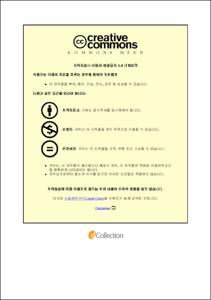An Empirical Analysis of Trade Structures and Determinants of Exports between Mongolia and Japan
- Alternative Title
- 몽골과 일본의 무역 구조와 수출 결정 요인에 대한 실증 분석
- Abstract
- With the possibility of gaining positive and negative economic effects from establishing a Free Trade Agreement, it is essential to conduct an economic analysis to evaluate the impact at an industry level and its potential possibilities for regional integration and development. The objective of this paper is to primarily discuss the relevance of the concept of structural complementarity between Mongolia and Japan in the context of regional integration from a theoretical as well as an empirical point of view. Also to encourage trade volume through production efficiency, fundamental determining factors that play a prominent role in understanding the bilateral export flows between Mongolia and Japan must be established. In that manner, this study conducts an empirical analysis by applying augmented gravity approach based on a balanced panel data set. Explanatory variables for the estimation include GDP, GDP per capita, real exchange rate, foreign direct investment and effectively applied tariff barriers. The Revealed Comparative Advantage Index (RCA), Trade Complementarity Index (TCI), and Trade Intensity Index (TII) is employed to measure the progression of international trade competitiveness between the two economies as well as the significance in the global trade. Accordingly, RCA and TCI indices have been applied based on a sectoral level for which three alternative RCA indices are administered, whereas TII has been calculated based on total exports and imports. In order to carry out the analysis, 30 sectors inclusive of 15 primary industries of Mongolia’s bilateral export to and bilateral imports from Japan has been utilized from the year range 2000 to 2018. Accordingly, study outcomes of the RCA and TCI indices demonstrate that Mongolia’s comparative advantage is focused in the agricultural raw materials and animal originated products and TII results validate that Mongolia’s exports to Japan are below its relative share of world exports. Meanwhile, Japan’s exports are based on the human-capital and high-technology concentrated products while TII results confirm that Japan’s real exports to Mongolia exceeds her export potential by approximately two folds relative to her world export share.
The Hausman specialty test outcome illustrate that Random Effects regression model was most compatible with the given data set. Possible policy implications have been provided on the basis of empirical findings. The estimation results indicate that products of GDP, real exchange rate and FDI have positive effects on Mongolia’s exports towards Japan whereas GDP per capita of exporter and effectively applied tariff contained significant negative impacts. In contrast, GDP and real exchange rate prove to be a significant influencing factor for Japan’s export flow while GDP per capita of importer and applied tariff hinder the export performance. FDI was found to have a positive yet insignificant correspondence to Japan’s export trade.
Keywords: Mongolia and Japan, Gravity model, Trade complementarity, Revealed comparative advantage, Trade Intensity, Pooled OLS, Random Effect, Fixed Effect
- Issued Date
- 2020
- Awarded Date
- 2020. 8
- Type
- Dissertation
- Keyword
- Mongolia and Japan Gravity model Trade complementarity Revealed comparative advantage Trade Intensity Pooled OLS Random Effect Fixed Effect
- Publisher
- Pukyong National University
- Affiliation
- Pukyong National University, Graduate School
- Department
- 대학원 국제지역학과
- Advisor
- Utai Uprasen
- Table Of Contents
- CHAPTER I. INTRODUCTION 1
1.1 Significance of study 1
1.2 Research objective 6
1.3 Research methodology 7
1.4 Thesis structure 7
CHAPTER II. MONGOLIA’S ECONOMY 9
2.1 Mongolia’s economic overview 9
2.2 International trade and regional integration 15
CHAPTER III. MONGOLIA-JAPAN ECONOMIC RELATIONS 23
3.1 Mongolia-Japan relations overview 23
3.2 Bilateral trade relations 27
CHAPTER IV. ANALYSIS OF TRADE COMPLEMENTARITY AND COMPARATIVE ADVANTAGE 31
4.1 Introduction 31
4.2 Theoretical framework 31
4.3 Literature review of indices 32
4.4 Applied indices 39
4.4.1 Revealed comparative advantage index 39
4.4.2 Trade intensity index 42
4.4.3 Trade complementarity index 44
4.5 Data description 45
4.6 Study findings 47
4.6.1 Findings of RCA Indices 47
4.6.2 Findings of TII Index 54
4.6.3 Findings of TCI Index 56
4.7 Conclusion 59
CHAPTER V. GRAVITY MODEL ANALYSIS ON THE DETERMINANTS OF EXPORTS 62
5.1 Introduction 62
5.2 Literature review 62
5.2.1 Correlation of trade and growth 63
5.2.2 Gravity model of trade 64
5.3 Research methodology 69
5.4 Model specification 72
5.5 Variable explanation and data sources 77
5.6 Empirical results 82
5.7 Conclusion 90
CHAPTER VI. CONCLUDING REMARKS AND POLICY RECOMMENDATIONS 95
6.1 Conclusion 95
6.2 Policy Recommendations 98
Reference 102
Appendix 113
- Degree
- Master
- Files in This Item:
-
-
Download
 An Empirical Analysis of Trade Structures and Determinants of Exports between Mongolia and Japan.pdf
기타 데이터 / 2.23 MB / Adobe PDF
An Empirical Analysis of Trade Structures and Determinants of Exports between Mongolia and Japan.pdf
기타 데이터 / 2.23 MB / Adobe PDF
-
Items in Repository are protected by copyright, with all rights reserved, unless otherwise indicated.